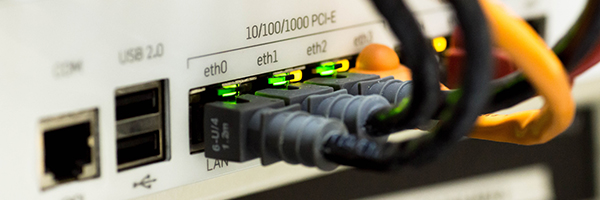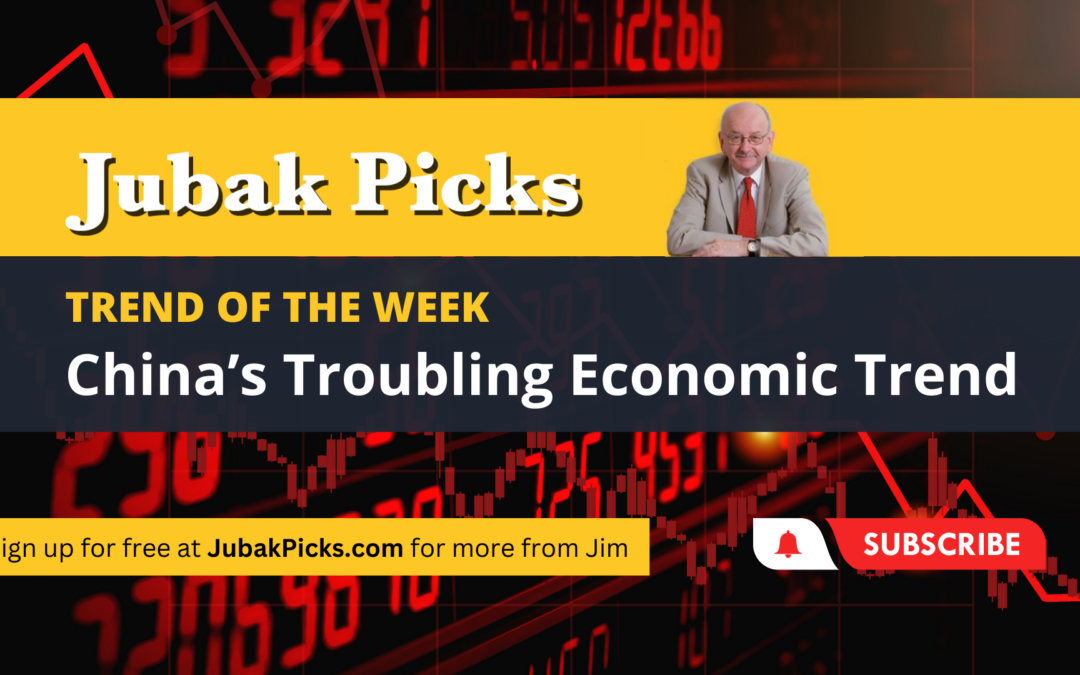Long Term

January 10, 2024 | Daily JAM, Long Term, Morning Briefing |
Right now all that the bond market and indeed all the financial markets care about is when will the Federal Reserve begin to cut interest rates. The consensus is that sometime relatively soon–March or more likely June–the Fed will begin to deliver interest rate cuts that will total somewhere around 100 basis points (at least) for 2024. But what if the Federal Reserve and other central banks around the world really aren’t in control of interest rates in the bond market anymore?

January 4, 2024 | Daily JAM, DNNGY, EQNR, Jubak Picks, Long Term, VWDRY |
I think this is good news, sort of, for the very troubled wind power sector.
Yesterday, January 3, Equinor (EQNR) and BP (BP) announced that they would terminate their contract and exit the 1.2 gigawatt Empire Wind 2 project off the coast of New York. Why is this good news?

November 21, 2023 | Daily JAM, Long Term, NVDA, Stock Alerts |
Nvidia (NVDA) beat Wall Street expectations again. After the market close today, November 21, the company reported adjusted earnings per share of $4.02 on revenue of $18.12 billion. Analysts had projected adjusted earnings per share of $3.36 and revenue of $16.1 billion.

November 16, 2023 | Daily JAM, Long Term, Millennial, Top 50 Stocks |
More real world dissent to Wall Street’s view that everything looks great for 2024. On Thursday Cisco Systems (CSCO) shares closed down 9.83% after the networking giant offered up significantly weaker-than-expected guidance for 2024. Wall Street analysts called the guidance “disappointing.” And the same day cybersecurity favorite Palo Alto Networks (PANW) dropped 5.42% after the company lowered its billings forecast for the fiscal 2024 year.

November 2, 2023 | AAPL, Daily JAM, Long Term, Morning Briefing, Top 50 Stocks |
So let’s see how the market takes this tomorrow.
Today stocks staged an impressive upside more. The Standard & Poor’s 500 closed up 1.89% and the NASDAQ Composite ended the day 1.78% higher. The small cap Russell 2000 was the day’s best performer with a win of 2.67% Tomorrow? Well, the October jobs report released at 8:30 will certainly help set the tone for the day with a weak report likely to reinforce the belief that the Federal Reserve is done aiding interest rates. But given how much of the recent bounce has been fueled by a return of optimism about technology stocks, it’s likely that Apple’s disappointing results, announced after the close of trading today, Thursday, November 2, will determine the direction of the trend.

October 11, 2023 | Daily JAM, Dividend Income, Long Term, Morning Briefing, Volatility |
“Nobody expects the Spanish Inquisition!” Monty Python observed back in 1970 before attempting to torture a coal-miner’s wife with a dish rack. There’s an important investing version of this core truth: The financial market usually worries about the wrong problem. So that when the “Spanish Inquisition” (in financial terms) finally arrives, everybody is surprised. Well, we investors and traders have done it to ourselves again. We’ve spent much of 2022 and a good part of 2023 worrying about whether Federal Reserve interest rate increases would send the economy into a recession. There are still a few recession die hards worrying about that possibility, but by and large the worry has shifted to whether or not the Fed will delay its rate cuts in 2024–and thus delay the arrival of the “rate-cut-bounce.” While MANY–but certainly not all–investors, traders, and market analysts have been looking OVER THERE, however, the credit markets have built up a huge debt overhead and the global debt bomb looks ever closer to exploding. A crisis with the dire effects of the Global Financial Crisis of mid-2007 to 2009 is a possibility. I’d “guess” that most portfolios aren’t ready. The time to get ready is now. This increasingly looks like a debt market crisis of the type known as a Minsky Moment. To get ready first understand the source of the problem. I’m putting together a new Special Report for next week on what to do to get ready. Today’s post is a kind of set up, a get ready for the post on getting ready, if you will.

July 25, 2023 | Daily JAM, DHR, Jubak Picks, Long Term, Top 50 Stocks |
The comparisons with 2022 continue to hurt shares of Danaher (DHR). For the second quarter, reported yesterday, the company saw revenue down 8% and adjusted earnings per share off 26% year over year. The culprit is easy to see. But I continue to hold Danaher in my Jubak Picks Portfolio where the position, initiated on June 20, 2017, was up 198.3% as of the close on July 25. Tomorrow July 26, I’ll be adding these shares to my long-term 50 Stocks portfolio. Danaher is one way to play the growth of the drug sector and the need of these companies for pure water.

July 11, 2023 | Daily JAM, Long Term, Millennial |
Two keys to finding a stock capable of racking up Noida-like gains over the long term: Finding a cheap entry point. And finding a stock from a company with a fast-growing (over the long term) addressable market. (Just as a refresher Nvidia (NVDA) shares are up an average of 61% a year over the last 10 years.) My second pick to meet this challenge: ESS Technology (GWH)

June 26, 2023 | Daily JAM, Long Term, Videos |
Today’s Trend of the Week is China’s Troubling Economic Trend. This graduation season is highlighting the economic problems China is facing. The 16-24-year-old Chinese demographic went to college as a way of delaying entering the job market during COVID, with the expectation of a guaranteed job upon graduating. The bad news is those jobs have not materialized. Unemployment for the 16-24 year age group was up to 20.8% in May, even higher than April’s shocking number. These Chinese college graduates have recognized this problem and have started a movement called “lying flat.” These potential consumers, they say, will not be buying houses, or cars but instead, will cut consumption. This negative view of the future trend in the economy has spread to all demographics and has led to people hoarding cash. The People’s Bank of China has cut short-term interest rates and the state council has suggested another stimulus package is coming. These factors could give Chinese stocks a bump up, but won’t get to the heart of the economic problem or bring the country’s growth above 5%. I’ve switched my international diversification to South Korea from China on JubakAM.com because I believe this economic trend is a long-term issue and that these problems are deeply embedded in the Chinese economy.

June 14, 2023 | ADBE, ALB, AMAT, CMI, Daily JAM, Dividend Income, GOOG, JCI, Jubak Picks, Long Term, MSFT, NVDA, SCCO, Top 50 Stocks |
I think a well-constructed portfolio should resemble an onion. (Yes, to continue the analogy, it may make you cry in the short term, but the end result after cooking time is yummy.) At the center of that onion is a core built of stocks with extremely high, risk-adjusted potential rates of return. These stocks won’t deliver the kind of huge gains you can reap from investing in a risky bet–if everything turns out right for that company and its stock. But neither are they likely to crash and burn because something goes wrong at the company. These core portfolio stocks will drop if the market as a whole heads south, but they will drop less and recover faster. These aren’t buy-and-forget, or hold-forever stocks. They can soar to unreasonable valuations at times and an active investor should take profits at some point of overvaluation. (I did a YouTube video recently (you can find it on any of my sites) on when to sell a very overvalued Nvidia, for example.) And they can trade at big discounts to fair value (which is, of course, when the steely-eyed among us will buy) because management has made a mistake or between the industry in which they do business is slumping, or because the market for the company’s goods and services has taken an unexpected direction. At that point, you’ll need to consider selling or adding to your positions depending on your analysis of how long the damage might last and how bad it is. But the point of this core to your stock portfolio is that these are companies that will deliver index-beating results with relatively small risks. Which will enable you, the investor, to plan how to achieve your financial goals with relatively less worry and uncertainty. So, without further ado, here’s my list of 10 stocks for a core portfolio–with the very important “whys” for each pick.

June 3, 2023 | Daily JAM, Long Term, Millennial, PANW, Top 50 Stocks |
Shares of Palo Alto Networks (PANW) rose by 5.59% in after-hours trading on Friday. The reason? News that the stock will be added to the Standard & Poor’s 500 index before the market open on June 20. Managers of portfolios that follow the index have to buy shares of Palo Alto to keep up with the change. The move to membership in the index increases ownership of the shares just as the stock is exhibiting extraordinary upward momentum. Shares of the cyber-security company are up 55.68% for 2023 to date as of the close on Friday, June 2, and up 22.81% in the last month. That performance rests on a record of high sustained growth. It’s the “sustained” part that I think the market finds so valuable right now.

June 1, 2023 | AMAT, AMD, CVS, Daily JAM, Dividend Income, EMR, GOOG, ILMN, Jubak Picks, Long Term, MSFT, NVDA, Top 50 Stocks, TSM, Volatility |
Artificial intelligence really is a paradigm-breaking, transformative technology. Right now, investors are so enthusiastic about the sector, especially the obvious leader Nvidia (NVDA), that we’re looking at a potential bubble that will collapse with much gnashing of teeth and I-told-you-so “wisdom” casting doubt on the reality of the entire endeavor. I think a bubble is indeed possible. Nvidia did trade at a trailing twelve-month price-to-earnings ratio of 196 on May 31, after all. But I think you do want to own the sector now–because the breaking of the bubble, if it does break is, in my opinion, two quarters or more away. And you want to own the sector for the long run–say, 10 years or more–because it is such a game changer for so much of the economy. But what to own? I’ve put together a list of the 10 stocks that I think are the best way to participate in the AI gold rush.












